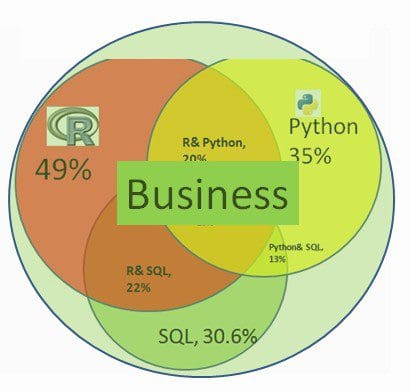The one language a Data Scientist must master
Getting started with the data science, and wondering which language to pick up and technology to explore. But, that is secondary, every business is structured differently and to understand it and build on top of it, is the crux of data science.
When business leaders read about (and tackle) big data, there is a lot to take in.
The field is growing so dynamically that many of the industry buzzwords would not have existed a few years ago. Just a short list of some programming languages is enough to make most business leaders dizzy. R, C, Python, Java, Julia, Scala, Ruby… just a few programming languages that our grandchildren might learn at high school. There will be many others; you can be sure about that.
There is one language in which every Data Scientist should be fluent: Business

As recruiters, we, of course, assess our candidates for the hard, technical skills. We look at the projects that they have completed on Kaggle. We can do a rigid technical competency checks to ascertain their professional level — That is all measurable. The candidates either have the knowledge and the skills, or they don’t.
However, the difference between a good Data Scientist and a GREAT Data Scientist is often not found in their technical ability or their amazing mathematical genius. Data Science exists to provide a service to business and business is run by people. If Data Scientists cannot comfortably communicate with their non-expert colleagues and bosses, then their effectiveness is greatly reduced. They need to communicate easily with people, to understand, to interpret, to translate.
They have to understand the issues of their business and give guidance in providing the data to reach the best solutions. They have to be adept at facilitating a continuous dialog loop – from business to the Data Science / big data teams and then back to the business. Great data scientists will not just address business problems; they will pick the right problems that can have the most value to the organization.
They have to be able to present their findings in a clear and simple way – in the language of their business. Not all people understand the technical jargon. The candidates who can explain what they have achieved without blowing my mind with jargon are those who usually go far. Accurate numbers and graphs are one thing, but only the Data Scientist understands them well enough to be able to draw the crucial business conclusions. They have to interpret and translate.
Many mid-level candidates struggle with this initially. They have not had much senior management interaction and have mostly been fairly insular in terms of their work circle within a company. The solution going forward is to give them more exposure to the business and to introduce the value of big data to their respective mid-management colleagues across all departments.
The organizations making the most of big data are now integrating their Data Science teams far closer to the rest of their business. They will grow up together as a team and learn to talk to each other more effectively.
They will learn to speak each other’s language.
Related:
- Four main languages for Analytics, Data Mining, Data Science
- Top Languages for analytics, data mining, data science
- R vs Python for Data Science: The Winner is …
- R, Python users show surprising stability, but strong regional differences
